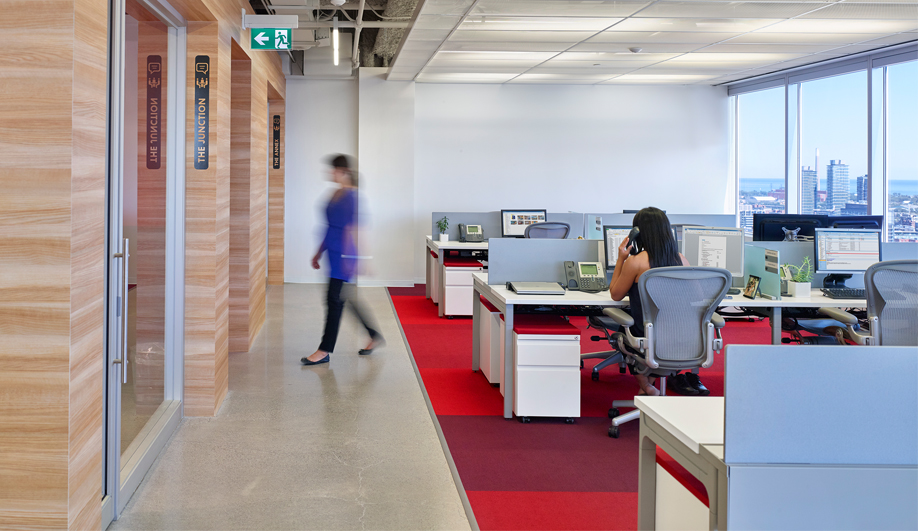An important component of job interviews is keeping the candidates calm and at ease — and ready to show their true selves. Setting is an important factor in establishing this rapport.
These guidelines for setting up an interview room (including some tips from police interrogators) will help you get the most out of your interviews – and your candidates.
Step 1: Choose a setting
Your interview room helps to set the tone for your entire relationship. The exact setting will depend on your company, and on the role you’re hiring for.
For example, if you work in a rigidly hierarchical industry, like banking, you may have to keep the candidate relatively sequestered. Same for a role that emphasizes confidentiality, like software development.
Or, if the role you’re filling is one that demands careful presentation, like a sales executive, you’ll want to see how candidates carry themselves in a more formal setting, like a boardroom.
If, on the other hand, your organization (and the role itself) is more casual and collaborative, you’ll want your candidate’s experience to reflect that. In these cases, an open lounge setting, one with comfortable upholstered seating and no barriers between you, tends to put candidates most at ease.
This can be a good opportunity to show off your company’s many perks, and to introduce potential hires to the people they’d be working with.
Step 2: Fine-tune to build rapport
Once you have chosen an ideal environment for the interview, you can fine-tune it to establish open and honest lines of communication as quickly as possible.
In this, few people have more experience than police interrogators. We collected a few valuable tips from the pros:
Remove any possible interruptions: You’ll want to keep your interview space free from interference. This includes removing interruptions from inside your office, but also covering windows with views to the exterior that might be a tempting distraction.
Add a wall clock: Checking your watch mid-interview gives candidates the sense your mind is elsewhere, or that they’re being rushed. Instead, mount a wall clock in the interview room. Just make sure it’s behind the candidate where you can see it easily, but they can’t.
Get that just-right size: Your space should be big enough to accommodate everyone comfortably. Too-small rooms can feel claustrophobic, while overly large rooms can make it difficult to establish rapport. Best practice suggests using a room with walls no smaller than two metres in length, and no larger than six metres. If you have no option but to use a larger boardroom, rearrange the furniture to create a more intimate zone within it.
Arrange the chairs properly: To establish rapport (without violating someone’s personal space), set the chairs 1.2 to 1.5 metres apart. If there are two or more interviewers, fan their chairs out at equal distances from the candidate’s, but as close to each other as possible, to make it easy for them to maintain eye contact.
Remove physical barriers: Position the table or desk off to one side, rather than placing it between you and the candidate (or do away with the table entirely, and hold your notes on a clipboard). Objects can create a physical barrier that hides body language, which you’ll want to observe. They also create a psychological barrier that can prevent complete honesty.
Step 3: Consider other essentials
Again, depending on the nature of the role and organization, you may have other requirements.
Will the candidate need to give a presentation? If so, the necessary AV needs to be available. Is there a test portion? If so, you’ll also need to set up a workstation.
For the latter, some companies may need to set up candidates in a private area, on a computer with no access to their servers. Others may choose to have candidates complete their test surrounded by their future coworkers, to see how they respond in an actual work environment.
You’ll also want to consider how you’ll accommodate any unforeseen physical needs. If a candidate is physically impaired, you’ll likely know ahead of time – but remember to keep both the interview space and washrooms barrier-free. Have seating on hand that can accommodate people of all different body types. And if your test portion takes place at a chair with a fixed writing surface, make sure it will work for both right- and left-handed workers.
Last but not least: keep glasses and a pitcher of water handy.
All of these considerations will ensure that your candidates feel comfortable and calm – which, in turn, will help you find the ideal person for the job.

